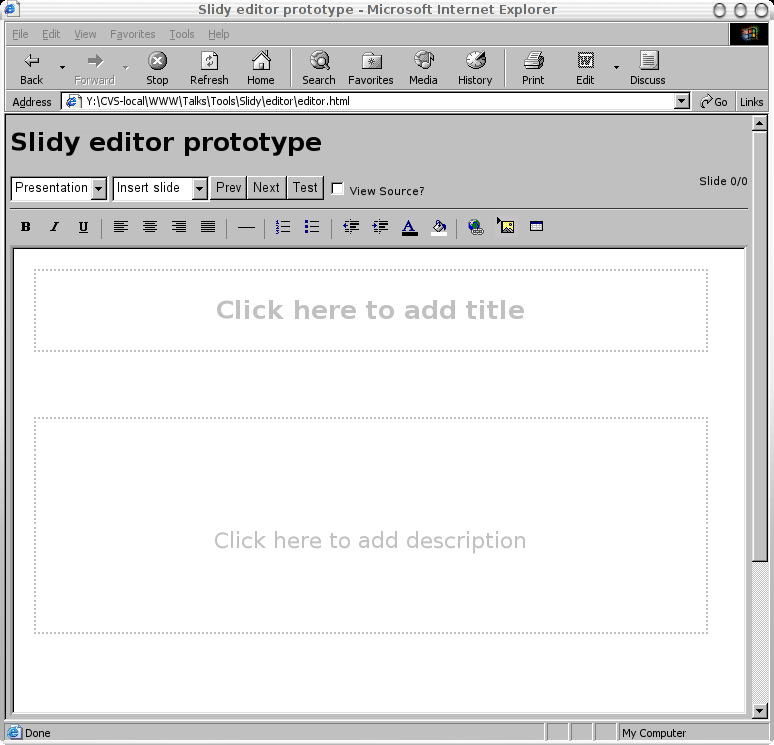
- #CONTENTEDITABLE GET PLAIN TEXT HOW TO#
- #CONTENTEDITABLE GET PLAIN TEXT CODE#
- #CONTENTEDITABLE GET PLAIN TEXT WINDOWS#
The contenteditable attribute and associated. However as the web grew, browsers transitioned to a more read-only state. When Tim Berners-Lee built the first web browser in 1990, he created modes for both browsing and editing HTML documents. Those ten lines will handle the basic use cases, however if you need more control and more features it is better to find a well supported editor instead of crafting your own solution: the amount of edge cases is endless. This attribute allows you to turn a standard read-only HTML element into an interactive, rich-text editor. let element = document.querySelector('div') let observer = new MutationObserver(mutations => mutations.forEach(mutation => onChange(e, value) and onBlur(e, value) callback props fire when youd expect and receive a plain text representation of the contentEditable s current. This method works in all major browsers while writing in WordPress, say for instance, and in most applications. To do that, press Ctrl+Shift+V to remove formatting instead of Ctrl+V on Windows.

So, replacing all the event handlers with a single MutationObserver allowed me to get content changes notifications consistently. Using a keyboard shortcut is, by far, the easiest way to paste plain text without formatting on your computer. MutationObserver API allows you to listen to markup changes on an element, and content changes on a contentEditable element are included ( and it is supported by IE11! Such a modern browser…). Setting the attribute allows you to click on any HTML content rendered on the browser and edit it. The HTML contenteditable attribute is used to make your HTML tags content editable. The first thing you might want to try is using the once-non-standard innerText API. Learn how you can use the contenteditable attribute to edit any HTML element content. This attribute allows you to turn a standard read-only HTML element into an interactive, rich-text. Next: getting the plain text content Next challenge was trying to retrive the element contents as plain text. Time to try with more creative solution: MutationObserver events. One of the lesser-known HTML attributes is contenteditable.
#CONTENTEDITABLE GET PLAIN TEXT WINDOWS#
In my case I’m dealing with an IE11 Webview on an enterprise app running under Windows 10, and contentEditable elements do not fire keyup events ( wtf!). It will fire every time content changes in reaction to a user action. Problem solved, except it is not supported by IE on contentEditable elements ( yep, I still have to deal with IE11).Ī quick Google search will point to several StackOverflow answers, suggesting a combination of keyup blur cut paste events in order to achieve something similar to the missing input event. On modern browsers there is a unified event that you can subscribe to in order to get content changes: input.
#CONTENTEDITABLE GET PLAIN TEXT HOW TO#
Getting content changed notificationsĪssuming you have no other choice but using a contentEditable div as a textarea, your first problem is how to listen to user interactions.

The reason why I had to use contenteditable is because I need the box to be content aware and adapt its size dynamically (both width and height). Let me begin by saying that unless you have really specific needs, textarea is what you should use to get plain text input. } else if (lection & != "Control") else if ( (sel = lection) & sel.It is no news that HTML contenteditable is a mess, however it is challenging even getting a plain text value of the user input. Var frag = document.createDocumentFragment(), node, lastNode only relatively recently standardized and is not supported in

Range.createContextualFragment() would be useful here but is
#CONTENTEDITABLE GET PLAIN TEXT CODE#
Also, I added code to place the caret after the end of the inserted content. If content is already selected, it is replaced, so this is effectively a paste operation. Below is a function to do this in all major browsers. In IE < 9 you can use pasteHTML(), as you mentioned. In most browsers, you can use the insertNode() method of the Range you obtain from the selection.


 0 kommentar(er)
0 kommentar(er)
